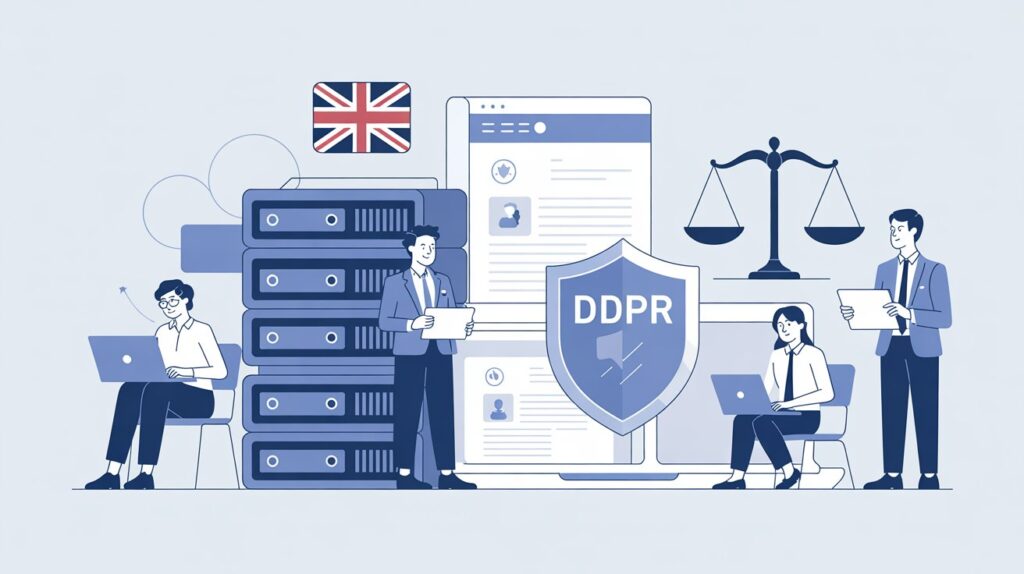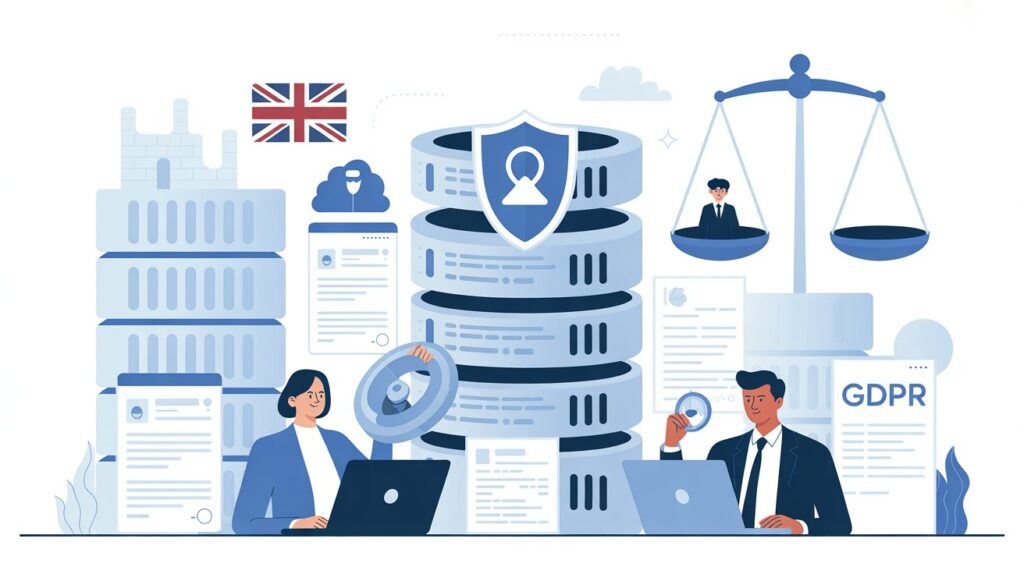In today’s digital economy, customer data is one of the most valuable assets any business holds. From contact details and purchase histories to behavioural analytics and cookies, modern companies collect vast amounts of information to understand, serve, and retain their customers.
But with this power comes serious responsibility. Mismanaging personal data doesn’t just risk fines—it erodes consumer trust and damages brand reputation. In the UK and across Europe, the General Data Protection Regulation (GDPR) and the Data Protection Act 2018 set clear rules for how organisations must collect, store, use, and protect customer data.
This article explains how to handle customer data legally under these frameworks. Whether you’re a small e-commerce store or a growing tech company, you’ll learn the essential principles, best practices, and compliance steps to keep your business on the right side of the law.
Understanding What Counts as Customer Data
Before you can manage data responsibly, you need to know what qualifies as personal data.
Under the UK GDPR, personal data means any information that relates to an identifiable person—directly or indirectly. Examples include:
-
Name, address, phone number, email
-
Location data, IP addresses, cookies
-
Payment or purchase history
-
Health or biometric data (sensitive data)
-
Customer feedback or survey responses
If an individual can be identified from the data—either on its own or combined with other information—it falls under GDPR protection.
The Legal Framework: GDPR and the Data Protection Act
The UK GDPR and the Data Protection Act 2018 are the key regulations that determine how businesses must handle personal information. Together, they enforce the following seven data protection principles:
-
Lawfulness, fairness, and transparency – You must process data lawfully and clearly explain how you use it.
-
Purpose limitation – Collect data only for specified, legitimate purposes.
-
Data minimisation – Gather only the data you genuinely need.
-
Accuracy – Keep information up to date and correct inaccuracies promptly.
-
Storage limitation – Do not retain data longer than necessary.
-
Integrity and confidentiality – Protect data from unauthorised access or damage.
-
Accountability – Be able to demonstrate compliance with all the above.
Businesses that respect these principles not only stay compliant but also gain a powerful competitive advantage—building trust and loyalty with their customers.
Step 1: Determine Your Lawful Basis for Processing
Every processing activity must have a lawful basis under GDPR. There are six possible legal grounds:
Lawful Basis |
When It Applies |
Example |
|---|---|---|
Consent |
The individual has given clear permission. |
Opt-in email marketing. |
Contract |
Processing is necessary to fulfil a contract. |
Shipping a customer’s order. |
Legal obligation |
You must process data to comply with a law. |
Keeping tax records. |
Vital interests |
Needed to protect someone’s life. |
Medical emergencies. |
Public task |
Carried out in the public interest. |
Government bodies. |
Legitimate interests |
Processing is necessary for your legitimate business needs unless overridden by the individual’s rights. |
Fraud prevention, service improvement. |
You should record your chosen lawful basis for each category of data and clearly explain it in your privacy notice.
Step 2: Be Transparent About Data Collection
Transparency is at the heart of GDPR. Customers must understand what data you collect, why you collect it, and how you use it.
Create a clear and accessible privacy policy that covers:
-
Your identity and contact details
-
What data you collect and how you collect it (forms, cookies, etc.)
-
The purpose and legal basis for each type of processing
-
Who you share data with (partners, processors, authorities)
-
How long you keep data
-
Individuals’ rights and how to exercise them
-
Contact details for your Data Protection Officer (if applicable)
Keep this policy easy to find—typically linked in your website footer or sign-up forms.
Step 3: Collect Only the Data You Need
The data minimisation principle requires you to collect only the information necessary to perform your stated purpose.
For example:
-
If you’re selling physical goods, you need an address for delivery—but not a date of birth.
-
If you’re sending newsletters, only a name and email are required.
Over-collection of data increases risk and may breach GDPR. Regularly review your forms, CRMs, and analytics tools to ensure you’re not gathering unnecessary information.
Step 4: Secure Customer Data
Data security is both a legal obligation and a moral one. Businesses must implement appropriate technical and organisational measures to protect customer data from unauthorised access, alteration, or loss.
Key practices include:
-
Encrypting data in storage and transit
-
Using strong passwords and multi-factor authentication
-
Limiting access based on employee roles (least privilege)
-
Regular software updates and vulnerability testing
-
Backups and disaster recovery planning
-
Secure disposal of data and devices
You should also create an incident response plan detailing how you’ll react to a breach—who’s responsible, how to contain it, and how to notify affected individuals.
Step 5: Manage Data Subject Rights
Individuals (data subjects) have specific rights under the GDPR. Your systems and staff must be able to handle these requests promptly and accurately.
The key rights include:
-
Right of access – to request copies of their data.
-
Right to rectification – to correct inaccurate data.
-
Right to erasure – “the right to be forgotten.”
-
Right to restrict processing – to pause data use temporarily.
-
Right to data portability – to receive data in a machine-readable format.
-
Right to object – to stop processing for certain reasons (e.g., marketing).
You must respond to requests within one month unless there are exceptional circumstances. Keep a documented process for tracking and verifying these requests.
Step 6: Handle Data Sharing and Third Parties Carefully
Businesses often rely on third-party vendors—cloud services, marketing platforms, payment processors, etc.—to handle customer data. Under GDPR, these vendors are data processors, and you remain responsible for their compliance.
To handle customer data legally:
-
Choose processors that follow recognised security and privacy standards.
-
Sign a Data Processing Agreement (DPA) specifying roles, responsibilities, and safeguards.
-
Regularly review their security measures and policies.
-
Avoid transferring data outside the UK/EU unless adequate protections (such as Standard Contractual Clauses) are in place.
Transparency also applies here: disclose all third-party relationships in your privacy notice.
Step 7: Create a Data Retention Policy
You must not keep personal data longer than necessary. Define how long each data category is retained and why.
Examples:
-
Financial records – 6 years (legal obligation)
-
Inactive customer accounts – 2 years (business need)
-
Marketing consent records – until consent withdrawn
When data is no longer needed, securely delete or anonymise it. Anonymised data can still be used for analytics without identifying individuals.
Step 8: Plan for Data Breaches
Even the best-protected systems can be compromised. GDPR requires that you report certain types of data breaches to the Information Commissioner’s Office (ICO) within 72 hours of becoming aware, unless the breach is unlikely to risk individuals’ rights and freedoms.
If the breach is serious, you must also inform affected individuals without undue delay.
Prepare in advance by:
-
Creating a breach response plan
-
Training staff on detection and reporting
-
Keeping logs of incidents and remedial actions
-
Conducting regular security drills
Documenting every step shows the ICO you take accountability seriously.
Step 9: Implement Privacy by Design and Default
Privacy should not be an afterthought—it must be integrated into every stage of your business operations. The concept of Privacy by Design and Default means:
-
Collecting only data necessary for the intended purpose
-
Limiting access to authorised users
-
Using pseudonymisation or anonymisation where possible
-
Ensuring privacy settings default to the most secure options
Whenever you launch a new system, app, or campaign that involves personal data, conduct a Data Protection Impact Assessment (DPIA) to identify and mitigate risks before deployment.
Step 10: Maintain Accountability and Documentation
GDPR’s accountability principle requires you to be able to prove compliance. Keep records of:
-
Data processing activities (what data, why, and how long)
-
Lawful bases for each processing activity
-
Data Protection Impact Assessments
-
Staff training and policies
-
Contracts and Data Processing Agreements
-
Breach logs and risk assessments
Appoint a Data Protection Officer (DPO) if your organisation processes large volumes of sensitive data or monitors individuals systematically. Even if not legally required, having someone responsible for data protection strengthens your compliance posture.
Common Mistakes to Avoid
-
Assuming small businesses are exempt – GDPR applies to all organisations that handle personal data.
-
Using pre-ticked consent boxes – Consent must be explicit and freely given.
-
Ignoring employee data – Staff information is personal data too.
-
Failing to update records – Out-of-date or inaccurate data violates GDPR.
-
Neglecting vendor compliance – Third-party mishandling is still your responsibility.
-
Overlooking cybersecurity basics – Weak passwords or outdated software can cause breaches.
Avoiding these mistakes helps you manage data responsibly and maintain customer confidence.
Benefits of Legal and Ethical Data Management
Complying with the law is just the beginning. Businesses that handle customer data ethically enjoy major advantages:
-
Enhanced customer trust – Transparency builds long-term loyalty.
-
Reduced legal risk – Avoid fines and enforcement actions.
-
Operational efficiency – Clean, well-managed data improves decision-making.
-
Competitive edge – Privacy can become a selling point.
-
Reputation protection – Demonstrating responsibility attracts partners and investors.
In an era where customers care deeply about privacy, a proactive data strategy is good business.
Practical Example: A Retailer’s Compliance Journey
Imagine an online retailer selling fashion items across the UK. Initially, it collected every possible data point from customers—birthdays, addresses, preferences—without clear purpose. After a compliance review, the company:
-
Audited data collection and removed unnecessary fields
-
Updated its privacy policy to clearly explain lawful bases
-
Implemented encryption and restricted staff access
-
Signed Data Processing Agreements with logistics and marketing vendors
-
Introduced a retention schedule and deletion policy
-
Trained staff on recognising data breaches
Result: stronger customer trust, no compliance warnings, and improved internal efficiency.
This example shows that following best practices for how to handle customer data legally doesn’t have to be complex—it’s about thoughtful planning and consistency.
FAQs
1. Do I always need consent to process customer data?
No. Consent is only one lawful basis under GDPR. In many cases, processing may be justified under contract, legitimate interest, or legal obligation. However, for marketing and cookies, explicit consent is usually required.
2. What happens if I breach GDPR?
The ICO can issue warnings, corrective orders, or fines of up to £17.5 million or 4% of global annual turnover—whichever is higher. They also have the power to suspend data processing activities.
3. How long can I keep customer data?
Only as long as it’s necessary for your stated purpose. Create a written retention schedule and delete or anonymise data after that period.
4. Can I transfer data outside the UK or EU?
Yes, but only to countries offering adequate data protection or through safeguards such as Standard Contractual Clauses (SCCs).
5. What is a Data Protection Impact Assessment (DPIA)?
A DPIA helps identify and mitigate privacy risks in new projects. It’s mandatory when processing is likely to result in high risk to individuals (e.g., profiling, large-scale monitoring).
Conclusion
Handling customer data legally is not just about avoiding fines—it’s about earning trust in a digital world built on transparency. By understanding the GDPR principles, applying lawful bases, securing data, and respecting individuals’ rights, your business can turn compliance into a strength rather than a burden.
Remember: privacy compliance is an ongoing process. Laws evolve, technologies change, and customer expectations grow. Review your policies regularly, train your staff, and treat personal data with the respect it deserves.
Ultimately, when you know how to handle customer data legally, you protect both your business and your customers—laying the foundation for sustainable growth, reputation, and loyalty in the years ahead.












